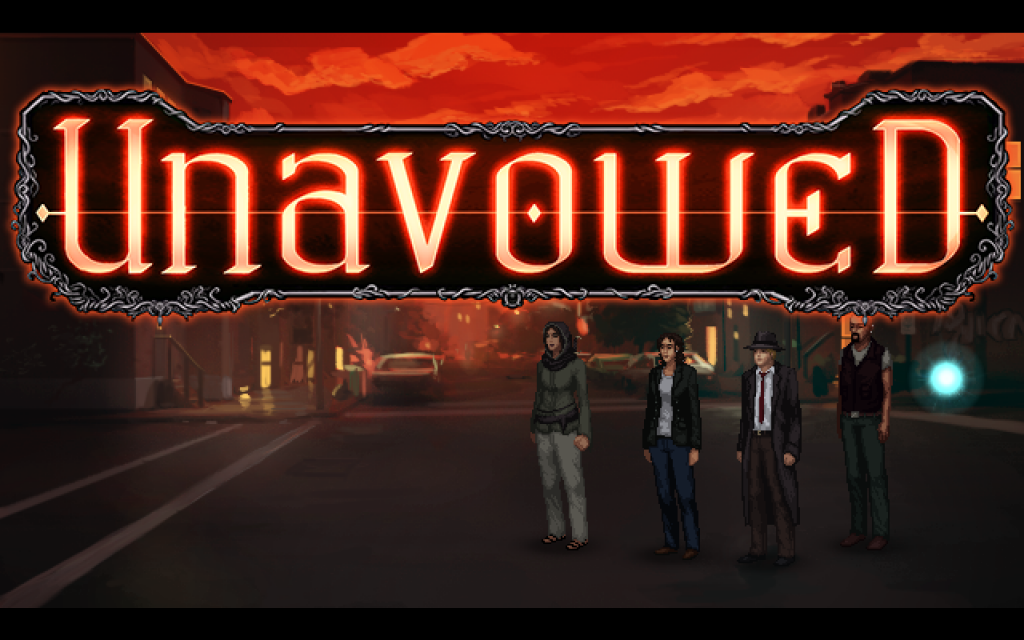 What would you do if you could resurrect one person from the dead? What (or who) would you sacrifice to gain this power?
What would you do if you could resurrect one person from the dead? What (or who) would you sacrifice to gain this power?
The fewer spoilers given for this game the better – it truly is an artistic masterpiece that is best experienced for yourself, building relentlessly until you have all the pieces of the story. That said, if you’re not okay with jump scares, graphic images of murder scenes, R-rated language, and text descriptions of a serial killer’s work, this might not be the game for you.
Second-Person Present
This is basically a visual novel, but they have given the player a role in the story. More than that: you aren’t just given a character vessel for experiencing the story…the player himself is made a character that interacts with the tale from a meta perspective. My brother especially loved this element, and I appreciated how it was woven into the story organically to become an essential part of the game – not a token “hey we have meta stuff.” To put it another way, this is a story that could only be told through a video game.
We also loved how the game fed us just enough information to feel like geniuses for figuring out the pieces of the story, while providing for extra clues should we need them. The way Paranormasight interacts with the psychology of the player to craft its tale is probably worthy of a doctoral thesis. It is, indeed, a masterclass on human nature, and engages the player both mentally and emotionally.
1980s Tokyo
I also enjoyed learning a bit about Japanese society and history. Throughout the game, you collect files – on suspects, places of interest, etc. – including articles about Japan. The game is set in the Showa era of Japan, which refers to the reign of Emperor Shōwa from 1926 to 1989 – specifically, it’s set in the “postwar” era when the jobs market was shifting urban, young people were rebelling at the increased expectations of universal education, and technology was transforming how people worked and entertained themselves.
Thus I was very disappointed to read the standard disclaimer: “This story is a work of fiction. All locations, characters, organizations, legends, etc. that appear in this game have no relation to reality.”
I assume they are referring to the magicians (or onmyoji), ghosts, and curses. Real Japanese word, fake powers…
Ethnic Accuracy
This is a purely aesthetic point, but it feels worth mentioning. The story takes place in Honjo, a section of Tokyo, and all the characters are Japanese. All the characters are Japanese!
I didn’t even realize this until I was drawing fan art, but every character has dark hair, pale skin, and dark eyes…except for the psychic girl, whose eyes are startling pale blue. Every time she was surprised or scared, her eye color jumped out at me. (She’s different, because she has a strong spirit sense.)
Why does this matter? In the age of fantasy shows that throw actors of different races into various roles with no regard for what this does to the world-building (Rings of Power is the first that springs to mind, though it’s not alone), it’s refreshing to find a piece of media that treats its world realistically. Yes, it’s also created by a Japanese author and studio for a primarily Japanese audience, but that just means the creators aren’t blinded by the American bias of A) wanting to shoehorn non-white races in everywhere, whether they fit or not, and B) thinking every nation has a broad mix of races like the United States.
The US is a nation of immigrants, outcasts, and rugged individualists, who have been mixing and getting along for up to a couple centuries.
Japan, in contrast, was extremely insular and xenophobic up until the 1800s, and xenophobic and imperialist in the 1900s. Even today, people who grew up in Japan yet aren’t ethnically Japanese face discrimination from their countrymen. (All of these being general statements, of course, that may or may not apply to any particular Japanese you may meet.)
Basically, Japan is on average more ethnically homogeneous than the United States, and the character designs accurately reflect the time and place the story is placed in.
Can exploring race, ethnicity, and cultural identity make for a fascinating story? Absolutely. I’ve heard good things about Blue Eye Samurai, for instance. But that’s not the story of Paranormasight…it’s got its hands full with vengeful ghosts, potential serial killers, and people dropping dead from curses.
(As a final illustration, every time my parents watch Avengers: Age of Ultron, they laugh at the scene where Ironman and Hulk are fighting in South Africa. See, my dad grew up in Africa (the Democratic Republic of Congo, to be specific), so they always ask, “Why are there so many white people on this street?” (Wikipedia says it’s Johannesburg, which might be a little more diverse than the interior of the continent…but still.) Most African countries are overwhelmingly ethnically homogeneous, in terms of melanin density.)
Three-Dimensional Characters
Race is just one (arguably small) facet of the human experience. A far greater element is our relation to good and evil through the choices we make. How do we face loss? How do we grapple with temptation? These decisions impact others in dramatic ways, and that is the story Paranormasight wants to focus on.
Every character feels real and alive, though not all of them are explored to the same depth. Part of the horror comes from watching mild-mannered citizens like you and me consider or commit truly evil acts. They do it to bring back some dead person they care about…but is that really justification for mass murder? That’s a question the game takes by the throat and wrestles with.
These are characters you can relate to, or feel sorry for, or truly despise, because they feel and act like flesh-and-blood people you might meet everyday.
Art and Music
I haven’t even mentioned the game’s atmosphere yet! The art and environments are beautiful, as are the character designs. They use first-person perspective to immerse you in each location, with an intuitive interface to interact with the people and world around you. The musical score and sound design work with the visuals beautifully to set the stage for each scene, be it for goosebumps, eurekas, or ponderings.
Consistent Experience
Paranormasight also handles tone flawlessly. It has jump-out-of-your-seat scary moments within minutes of laugh-out-loud funny moments. How is such juxtaposition possible?
The funny moments are built on the likable characters, and their interactions. Likewise, the scariest of the horror moments stem from putting characters you care about in danger. The whole combines into a roller-coaster of emotions that won’t let you go until the very last scene.
If you enjoy fiction that explores the dark core of humanity, yet still holds out hope – if you enjoy meeting lovable, yet realistically flawed characters – and if you like your brain challenged in a way that makes you feel smart…then Paranormasight might be for you!
Paranormasight: The Seven Mysteries of Honjo was published by Square Enix and is available on Steam or directly from Nintendo. (Both of them age-restrict the page…and I guess I did lose almost an entire night of sleep to this game…good golly! But it’s so good, you guys!)










